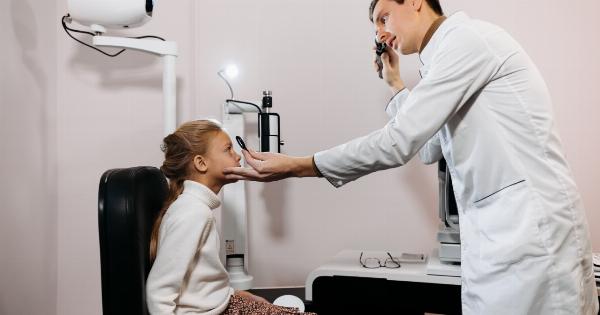Pandemics, such as the recent COVID-19 outbreak, have dramatically impacted the healthcare industry worldwide. Health professionals, including doctors, nurses, and other support staff, have been at the forefront of combating these infectious diseases.
However, the immense pressure and challenges faced by these professionals in caring for countless patients during pandemics can lead to emotional stress and burnout.
Understanding Emotional Stress
Emotional stress is a psychological response to demanding or challenging situations that impact an individual’s overall wellbeing.
Health professionals often experience high levels of emotional stress due to the nature of their work and the increasing demands during pandemics. The responsibility of providing care to patients, witnessing suffering and death, and the fear of contracting the disease themselves can all contribute to emotional stress.
The Impact of Emotional Stress on Health Professionals
Health professionals who experience significant emotional stress during pandemics are at risk of burnout, a state of physical, mental, and emotional exhaustion.
Burnout can manifest as cynicism, decreased job performance, and a diminished sense of personal accomplishment. It not only affects the wellbeing of the professionals but also compromises the quality of care they provide to patients.
The Need to Evaluate Emotional Stress and Burnout
Evaluating the emotional stress and burnout of health professionals in EKPA during pandemics is crucial for several reasons:.
1. Identify Levels of Emotional Stress
Conducting evaluations helps assess the extent to which health professionals in EKPA are affected by emotional stress during pandemics.
Understanding the levels of emotional stress can aid in adjusting workloads, implementing support systems, and developing coping strategies.
2. Recognize Early Warning Signs
By evaluating emotional stress and burnout, early warning signs can be identified. These signs include increased absenteeism, decreased engagement, and interpersonal conflicts.
Recognizing these signs early on allows for intervention and prevention of further deterioration.
3. Provide Adequate Support
Evaluations provide insight into the specific needs of health professionals and enable the implementation of appropriate support mechanisms. This may include counseling services, stress management programs, and work-life balance initiatives.
Proactively addressing emotional stress helps in maintaining the mental wellbeing of health professionals.
4. Reduce Staff Turnover and Retain Talent
High levels of emotional stress and burnout can lead to health professionals leaving their positions or even exiting the field altogether.
Evaluating and addressing emotional stress can help in retaining talent, reducing staff turnover, and ensuring a skilled workforce to tackle future pandemics.
5. Improve Patient Outcomes
The emotional stress and burnout of health professionals can impact patient outcomes. By evaluating and mitigating emotional stress, healthcare organizations can improve the quality of care provided to patients.
Health professionals who are emotionally well are more likely to provide compassionate, effective care.
Evaluating Tools and Strategies
Several evaluation tools and strategies can be employed to assess the emotional stress and burnout experienced by health professionals in EKPA during pandemics:.
1. Surveys and Questionnaires
Surveys and questionnaires provide a quantitative measure of emotional stress and burnout levels among health professionals. They can gather data on factors such as workload, emotional exhaustion, and job satisfaction.
Feedback from these tools helps in identifying areas that require improvement and tailoring interventions accordingly.
2. Focus Groups and Interviews
Qualitative methods, such as focus groups and interviews, allow health professionals to openly discuss their experiences, challenges, and stressors.
These methods provide valuable insights into their emotional and psychological state, facilitating the development of targeted support initiatives.
3. Observational Assessments
Observational assessments involve observing health professionals in their work environments to identify signs of emotional stress and burnout.
This method helps to gauge the impact of the working conditions, interactions with colleagues and patients, and workload on their emotional wellbeing.
Supporting Health Professionals
To mitigate emotional stress and burnout among health professionals in EKPA, several support measures can be implemented:.
1. Enhancing Workplace Communication
Open and regular communication channels allow health professionals to express their concerns, share experiences, and seek guidance. Establishing a culture of open communication fosters a supportive environment and encourages seeking help when needed.
2. Introducing Mental Health Programs
Mental health programs tailored specifically for health professionals can provide necessary support.
These programs may include access to counseling services, peer support networks, and stress management workshops to help cope with the emotional challenges faced during pandemics.
3. Reducing Workload and Promoting Work-Life Balance
Appropriate workload management is essential to prevent excessive stress among health professionals.
Measures such as optimizing staffing levels, adjusting shift schedules, and promoting work-life balance contribute to reducing emotional stress and burnout.
4. Providing Training and Education
Investing in training and education programs equips health professionals with the necessary skills and knowledge to cope with the challenges of pandemics.
Training in self-care strategies, resilience building, and stress management techniques can help buffer the impact of emotional stress.
5. Implementing Organizational Support Initiatives
Healthcare organizations should prioritize the development and implementation of support initiatives to address emotional stress and burnout.
This may involve creating support groups, recognition programs, or initiatives that promote a positive work environment and foster a sense of belonging.
In conclusion, evaluating the emotional stress and burnout experienced by health professionals in EKPA during pandemics is crucial for their wellbeing and the quality of patient care.
By identifying stress levels, recognizing warning signs, providing support, reducing turnover, and improving patient outcomes, healthcare organizations can foster a resilient and thriving workforce even in the face of challenging times.






























